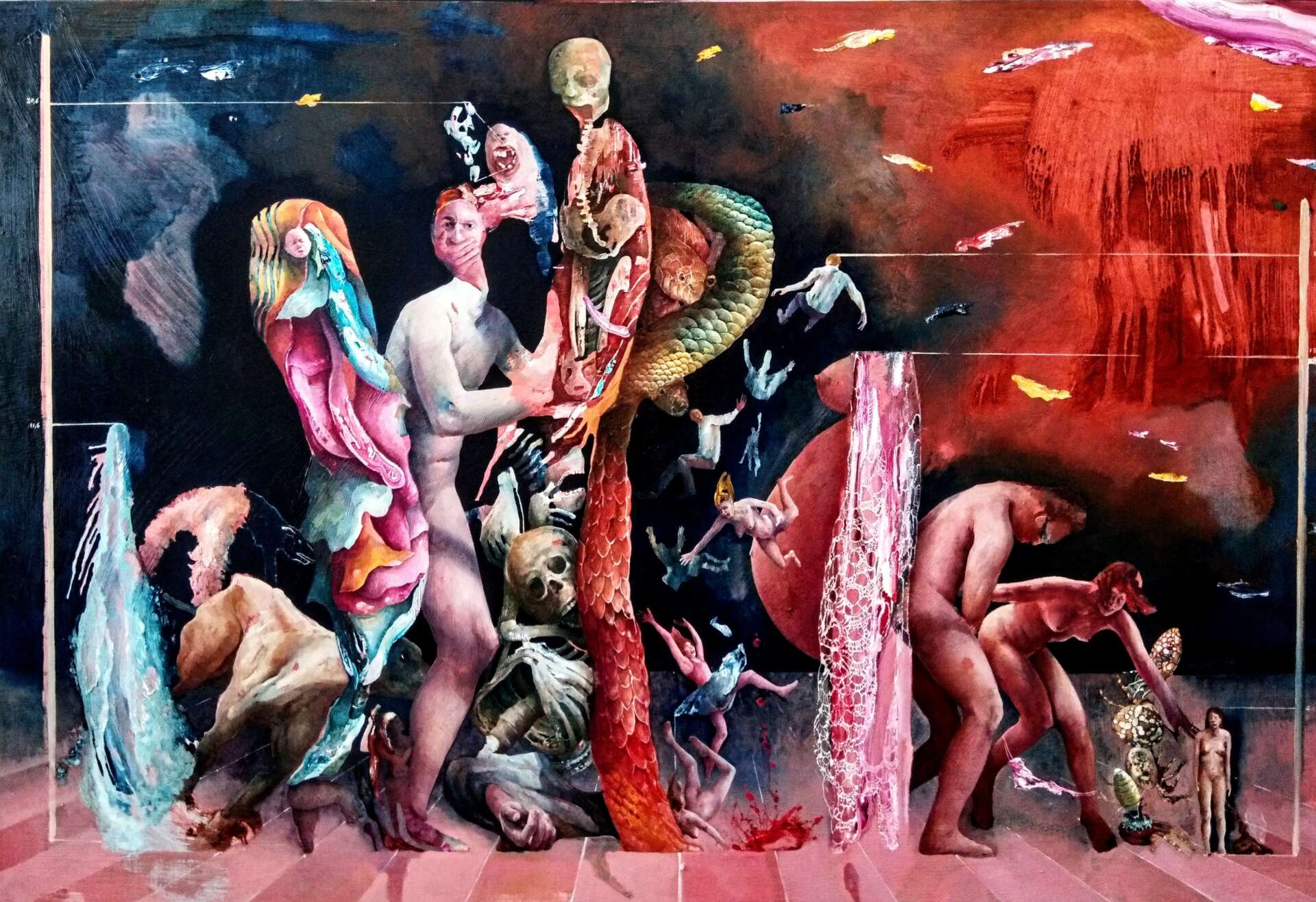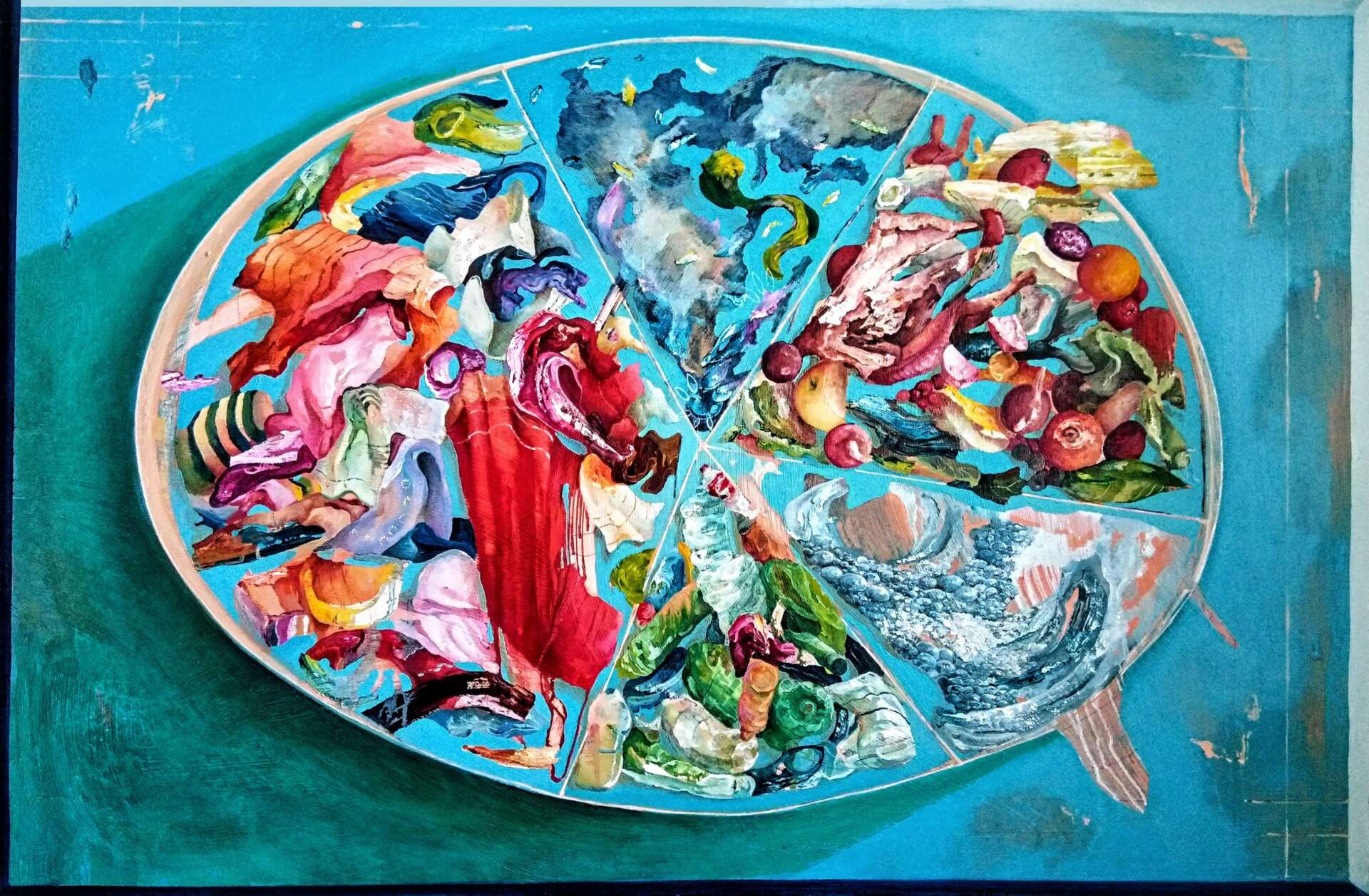We caught up with the brilliant and insightful Chiara Sorgato a few weeks ago and have shared our conversation below.
Chiara, thanks for taking the time to share your stories with us today What’s been the most meaningful project you’ve worked on?
Much inspiration for my works comes from political facts, also from news about the economy and society. Issues that interest me most are what I called polarized, ideological themes very fascinating for mind but for dialectical diatribes too, just like: relation between different religions, the immigration issues, the conflict between sexs or opposite generations, welfare disequalities. These are my macro themes.
Let me talk, for example, about gender gap issues.
From the very beginning of my activity, when I was a young student of the Fine Art Academy in Venice, not even calling myself an artist yet, I really started to look at the world from my woman point of view and decided to confront the complex topic of gender inequality, women’s labor and maternity.
I would like to explore themes I felt related to me and to other women, fight prejudices linked with women’s condition in family, society and inside the work world. Even today, this theme is one of those I work on the most and which I continue to adress in my works and artistic projects.
The macro themes I deal with are like planets, around which gravitate all the related phenomena. Some of my last works reflect on our responsibility around avoidable waste. Other works speak about economical inequalities between countries.
In recent years I have combined my research with the study and statistical confirmation of data, what I call numerical microparticles of reality. I have developed an unusual, but not cold, combination of painting, data analysis and data visualization, in order to better corroborate and represent my theses on the canvas. The statistical approach is not all-encompassing, but serves as an excellent contribution to leave the, sometimes emasculating, sphere of opinion and offer users not only an individual point of view, but a statistical confirmation. Overall, I could define my research as a harsh reflection on power, on human fallacies and on the often unequal bonds between parties or between reason and necessity. Statistical consolidation then becomes a very useful tool to get ever closer, I don’t think randomly, to a form of truth, even if partial.
My latest project, connected to the study of data and their representation in painting, is called YOU. The aim of the project is to deeply investigate dreams, fears, aspirations and much more of human beings starting from the searches that users do on the internet. This is a very complex and fascinating work, aimed at understanding the human psyche more deeply and intimately.


Awesome – so before we get into the rest of our questions, can you briefly introduce yourself to our readers.
First of all I’m an artsist, a painter in particular. Being a painter wasn’t a pupouse I had still childwood. It was a possibility, probably not the most dreamfull I had. The great need I always had was to comunicate ideas and reflections, and I think, in my own case, that painting is just this, a form of comunication, a language.
I am a very curious person, sometimes annoyingly curious, and probably this is the reason why I deal with so many different topics in my work. Speaking about style, I have my own one and really I don’t care about fashions and trends. My painting is surely figurative, but also informal, and sometimes abstract.
All books and manga comics I read in my life have a great responsibility in forming my awareness. When I was younger I loved any kind of novel. Nowadays it is the same even if on my nightstand you will find more likely essays. Movies and videogames have built a great part of my imagination. I would be a very different person if I didn’t play with an XBOX or didn’t love Hideaki Anno’s EVA.
Let me say it, in a fantasy world, where I might be the creator of another person’s work, I would wanted to write Animal Farm by George Orwell, or direct Mother! by Darren Aronofsky.
Regardless of the chosen medium, intellectual works that have shaped my awareness and imagination are what I call layered. They include therefore works that allow different interpretations, which require the user to carry out an exercise of comprehension on several levels. Works that require efforts of interpretation.
The biggest responsibility that I feel toward the public is to offer a large platform of information. I really hope that my work can help to a better understanding of our society and our individual responsibilities. I really hope that my works may connect the audience both with what is pleasant for mind and sight and with urgent issues of our time that I address in my works. I want to contribute to improving the audience’s awareness and my work really needs a lot of analytical and critical thought from people.


Can you share a story from your journey that illustrates your resilience?
An artistic traditional path usually consists of working for a gallery perhaps with exclusive contract that can be more or less elastic. I know this approach, at the beginning of my career I started with this method. Ironically what could be seen as a point of arrival for me was a starting point. I won’t go into the story details how I have moved from a gallery to another one and now I work in a less formal way with them in the art market. Furthermore, as is obvious, mine is one and only a single experience that must not be taken as a paradigm. Anyway, in my case, exclusivity did not bring enough benefits; instead, it was decidedly castrating in terms of profile career advancement and CV enrichment. In any case, a few years ago I left the gallery I was working with and decided to become a sort of entrepreneur of myself and I started taking care of promoting my work on my own. I must admit that at the beginning it was really hard and many times I believed that I wouldn’t make it and that it would be better to give up on my dreams. I had a second job to support myself and all the free time I had I dedicated to my artistic work. Even though I had no ongoing projects or exhibitions to do, I didn’t let myself go. Often, when friends asked me to go out or if I would go on holiday, I replied that I couldn’t, because I had to paint. It didn’t seem to make sense, because at that moment my works remained invisible to the public, locked in my studio. Why bother so much if there are no exhibition projects on the horizon? I always told myself that I just had to do it, that quitting would be a real failure.
I don’t know if, after three years, I only get luck, but the right opportunity arrived, and I was ready to catch it.
If I had given up I wouldn’t have been able to seize that opportunity at the right time, even if, sincerely I have to admit that is very very hard continue working on something that isn’t guaranteeing prospects, but is the only way, when you really want a dream to come true


How about pivoting – can you share the story of a time you’ve had to pivot?
I was the best student at high school, at least the one with the highest average. I wanted to study law and dedicate the rest of my life to the study and application of the law. For me it was obvious to attend university and undertake that path. My mother, however, one day, told me that in her opinion I was making a big mistake, because more than anything else I was an artist and I had to follow that path. I know it’s strange that a parent encourages a daughter (or a son) to undertake such an uncertain career, compared to that of a lawyer for example. It went like this, and after thinking about it for a few days I understood that she was right. I wouldn’t have been a lawyer, I wouldn’t have gone to university and I would have experienced the fear of taking a real leap into the dark by pursuing an artistic career. Understanding that this was really my path was a shock for me too. I didn’t even know how a professional artist lived or made money! Anyway I totally canghed my plans. It was the right choice.

Contact Info:
- Instagram: c.sorgato
Image Credits
For the personal photo, the portrait of mine, the credit is: Adji Dieye


